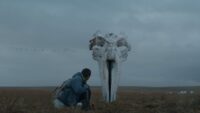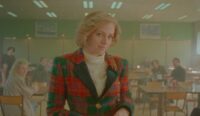As J Paul Johnson mentioned in his recent review, Dennis Hopper’s Out of the Blue has now been restored and made ready for wide release. First made in 1980, the drama—sensitive and bleak in equal measures—has been a long time coming. Having watched the film recently I imagined the restoration must have been a fascinating project, and so I was fascinated in turn when the opportunity arose to interview the two producers involved: John Alan Simon and Elizabeth Karr of Discovery Productions.
After introducing myself, I confessed I’m much more used to talking to people about their own films and so asked what drew them to this film for a restoration and rerelease project. “I drew Elizabeth to it,” John answered. “This is something that’s been a major part of my life for about forty years, since the film was first made. I’d been a film reviewer and critic at Harvard, for The Crimson; and then in Chicago when I was at grad school, for a little consortium of papers in the mid-West; and ultimately for the New Orleans paper, the Picayune. Down there, I met a guy who had an encyclopaedic knowledge of shelved movies, and we distributed a movie called The Wicker Man very successfully in the US, having resurrected it and restored it in terms of some footage that had been cut out for the test marketing in the US. Time Magazine wrote an article about me rescuing movies, and I was deluged with all these bad, unloved movies; but one movie that came to me was Out of the Blue.
“I saw it and fell in love with it,” continued John, “and by that time I’d moved out to Los Angeles to be more central to the movie business, so I contacted Dennis and said ‘look, with The Wicker Man, we took Christopher Lee around the country and kind of did hand-held distribution before anyone else was doing it; would you like to do that with me and Out of the Blue?’ His career had hit a low ebb, as you might know. After directing Easy Rider, he did a film called The Last Movie which was considered unreleasable by its studio, Universal. And his acting career was not in great shape either, because he was known to be very difficult at that point and he did have some substance issues (I think they’d abated a bit by the time I met him in the early 1980s). But it was funny: he came up to my rooftop office in Beverley Hills and said ‘hey man, this was where it happened!’ I said what? And he said ‘you’re in the same office I had when I directed Easy Rider!’ So that was a nice synchronicity and we got on very well.
We did a very successful art-house release of the movie back then, but it was limited by the fact that the main chain for art house in the US, Landmark Theatres, hated the movie with a passion and we could never book into any of their screens. We opened in Boston and it was a bit of an adventure that I’ve really been involved with since then. When Dennis took over as director (initially he’d just been hired to act), the movie lost its Canadian certification, and what went from being a tax shelter sure-profit deal for the investors became a sure-loss deal for them. So there were a lot of irksome issues between the producers and the financiers. And as the original director had been fired about ten days into shooting, Dennis completely rewrote the script, turning it from a family-friendly film into this bleak, nihilistic tone poem.
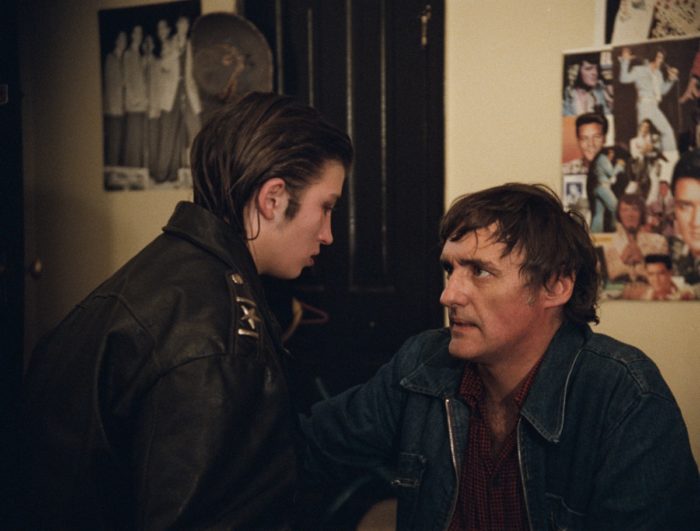
“So that’s kind of how I got involved! Elizabeth got involved with me—she’s also my wife and my producing partner—around 2010, when we did a 35mm restoration of the movie. This was just in time for the Cinémathèque française career retrospective of Dennis; the restoration became the gala event at the month-long retrospective. Dennis was able to go to France and see it before he became terminally ill with cancer, which was really great. We had some support from Cinémathèque française, but the 35mm prints were starting to become frayed from usage, even though we tried to just play them at archives, serious events…”
“And museums,” added Elizabeth. “Whenever we brought it to different museums around the world, those screenings would be sold out or packed: there was clearly some enthusiasm and passion for this movie. I think lovingly back to lugging those film cans, because they were super-heavy to ship them around the world. But like John said, they were starting to wear out.”
“She remembers me lugging them, I think,” John smiled.
“Well, there were a couple of times when I did,” returned Elizabeth. “It was at Cinefamily, when John was doing a Q&A with Linda Manz [who played teenager CeBe], who came up from Palmdale. People still come up to us who remember that specific event. But anyway, we knew that there was an audience there, and we wanted more people to see it; and I know for John it was a personal ‘thank you’ for his debt of gratitude to Dennis, who had been an important figure in his life.”
Elizabeth had mentioned the affection and enthusiasm for the film, and I had seen the investment given on their project’s Kickstarter page; I asked the pair to what they attributed that passion for Out of the Blue. “I think the passion for the film is in the intensity of the filmmaking,” John said. “I think Dennis felt it might be his last chance to direct a movie; it was an accidental chance he’d got. He’d gotten to know Linda a little before taking over, and in her, he saw something of himself; I think it’s one of the great father-daughter castings of all time. I think he saw the opportunity to make the kind of actor-driven, intense, emotional experience that he thought he could get. He was a consummate actor.
Linda mentioned the debt of gratitude; Dennis thought I should direct, and I was trying to refocus from reviewing films to having a writing-producing deal at Universal. We had a couple of projects that we talked about working on together, actually with him directing, but I said ‘I don’t know anything about acting; I’m a writer and I think I understand a little bit about the post-production and editing room’, and he just said ‘I’ll teach you’. And all the time that we were on the road with the movie, it was like a master class in acting, where he taught me about his process, the actor’s process and working with actors. I think the movie, for anyone who loves acting, I think it’s Dennis’s best performance. Linda Manz thought it was her best performance of a kind of truncated career (everyone had known her as the little girl in Days of Heaven). And I think Elizabeth can speak to this as much as me, but most of the audience has always been men; even the Kickstarter pledges were 80% male (the partial costs; this was an expensive project. We knew with Kickstarter it was all or nothing, so we set our goals modestly and knew we’d have to come in with some of our own modest funds.), but it’s finding a new audience of women and not just those who could have seen it when it first came out.”
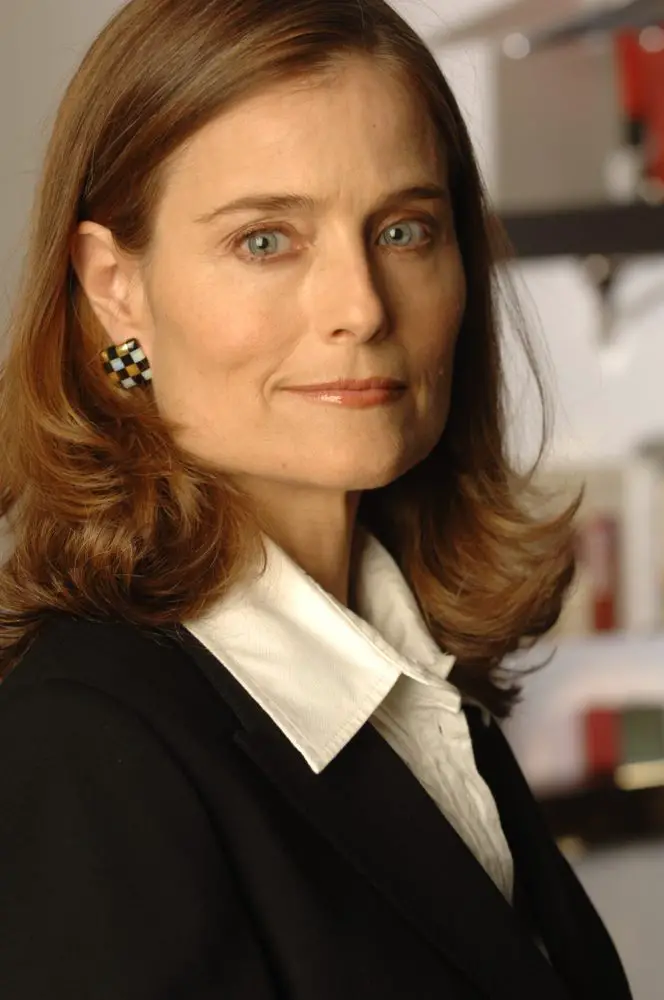
“I think a reason for a way into this movie for people is the acting—it’s so incredible,” said Elizabeth. “Linda Manz is raw, authentic; she just is. I think for a lot of people, although the subject is bleak (and it is horrifying and devastating in some ways), there is some truth that permeates the movie. You want them to make different choices, and they don’t. But I’m delighted to say, as John just alluded to, that women are finding this movie. And I think our two presenters who came to support us are also passionate about the project: Natasha Lyonne and Chloë Sevigny. They have helped open the door to embrace a wider audience. But I think there’s something in that triumvirate actually; Linda, and Dennis and Sharon Farrell [who played CeBe’s mother, Kathy]. The audience is like moths to a flame while watching them as they go to their own flames of disintegration.
I’m just delighted that it’s finding its home and its audience, and with social media too now. Six young filmmakers from LA contacted us recently: ‘can you come and talk to us? Do you know how much Dennis Hopper means to us? Do you have any idea how Dennis Hopper is the guy we look to?’ John, who’s been along this journey, has always known this, and I’ve had an inkling, but it’s wonderful to see them coming out of the film woodwork, so to speak, with this restoration. And people also want to see it in a cinema! Yes, the Blu-Rays and DVDs are important, and we’ve really gone all out on making the disc extras really special with interviews and so on, but the number of people who are excited to go and see it in a cinema makes me very happy. I’m a big champion of indie cinemas and arthouses, and I think seeing a movie in a community with others is still so important and I never want to lose that. I’ve been fearing that with the pandemic, people might not want to go back into the theatres, but so far…”
John had “one more thing to say about the movie. I think that, along with Truffaut’s The 400 Blows and Tony Richardson’s The Loneliness of the Long Distance Runner, this is one of the great movies about teenage alienation and youthful rebellion, and the yearning that I think almost every adolescent kid feels to be part of something. For CeBe, the Linda Manz character, it becomes punk rock. In a way, the movie becomes a commentary on Dennis Hopper’s Easy Rider. In some places in Europe, when the film was released, they called it Children of Easy Rider or Child of Easy Rider; and in some ways, it is the morbid outcome of the countercultural revolution of the late sixties that Easy Rider was such a part of, with its crashing and burning along with the American dream and the idea of the American family.”
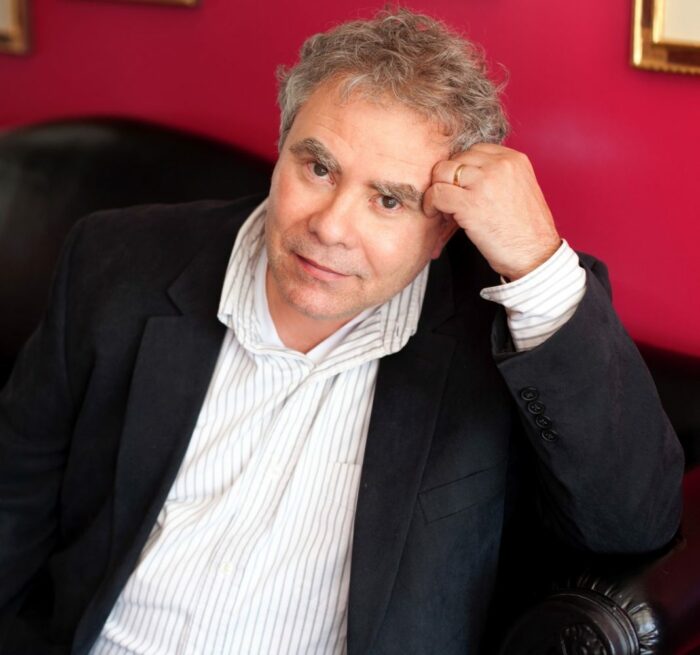
Having seen Out of the Blue, I can appreciate the buzz and what it means to John and Elizabeth, but I still know very little of what they have had to do in a practical sense. I asked next what exactly is involved in restoring a film to 4K. “We were very fortunate,” said John. “One of my friends is an amazing restoration export: Robert Harris, who restored Lawrence of Arabia, The Godfather and Bridge over the River Kwai, amongst his many credits. He suggested we go into a post-production house here in LA, called Roundabout Entertainment; and the people there were amazing experts. I felt confident producing the restoration on a technical level, and Elizabeth and I are both the producers. Back when we did the 35mm, I gave Dennis the opportunity to come into Technicolor (where of course they aren’t making movies any more, they’re out of the film business), so it was essential we did a digital restoration as the prints were becoming damaged and worn. So Dennis had the confidence for me to supervise all the transfers of the movie and he got to see them and liked what I’d done, so I felt good going in.
What I think is so amazing, we scanned the movie from the original negative and then we had a great colourist named Greg Garvin who worked with us, and you kind of go through the movie, cleaning it up, and looking at the colour; you kind of have unlimited choices. My goal was always to make the movie look as much like it had looked when the prints were new, but one of the things I discovered was in the post process of the restoration, there were things that weren’t possible with 35mm film. For example, when I sat down with Dennis at the end, there was a scene near the end that’s like black, and I said to him ‘why did you cut to black? What’s going on?’ and he said ‘ah man, the cinematographer screwed me; he said you’d see something, but you don’t see anything. Do you think we should take it out?’ I told him ‘no! You can’t take it out! You’ve got to get the sense that there’s something there, even if you don’t see anything.’
But in the 4K restoration, it was a bit of an arduous process, but we were able to bring out something from the negatives that never made it to the prints, even with the great printing process at Technicolour. You can see the people in the room, some activity between Sharon Farrell and Dennis Hopper. And there’s another scene in Raymond Burr’s office, where he has a plate-glass window behind him. It’s always very smoky and smoggy, which is kind of distracting, but I know Dennis would have chosen it because you see this great view of Vancouver’s mountains and cityscape. And in the 4K restoration, we were able to bring that out, so you’re able to see why Dennis chose that location in the first place.
“You know, you can spoil the movie with all these digital toys and tools, and there was one shot that always bugged me: it was a little too symmetrical. Dennis was no Wes Anderson; he wouldn’t just put the camera down and shoot, with the same on right and left, like in classical or Greek aesthetics. I was tempted to just move the camera slightly, and of course, in 35mm, the movies are matted anyway when they show in theatres. But I thought, I’m not going to do it for one shot, and Dennis had a great photographer’s eye. Restoring this movie was about channelling as best I could the way Dennis would have wanted it. And thanks to Elizabeth who spearheaded our Kickstarter and all of our social media to kind of get the ball rolling, and for bringing in Natasha Lyonne and Chloë Sevigny.”
Elizabeth had a story to tell there: “I was driving in my car and listening to NPR, Terry Gross’s Fresh Air; and Natasha Lyonne was on, talking about Russian Doll. Out of the blue, literally, she starts talking about Dennis Hopper and Linda Manz: ‘Out of the Blue is my favourite film, Linda Manz is everything.’ And I said to John ‘she’s our people.’ Then kismet, we ran into Natasha at a Netflix luncheon a couple of days later; we told her what we were doing and she said simply ‘how can I help?’ So that’s how she got involved, and she got Chloë involved, because Chloë and Linda had worked together in Harmony Korine’s Gummo and Chloë is besotted with Linda Manz’ work, thinks that she’s possibly the greatest actress of all. So they’ve just been great, and people like Natasha and Chloë, who are defined by their fierce independence, that’s the people that we’ve been finding who are jumping on this bandwagon; either because they already knew and appreciated the film or have heard about it, or are now experiencing it for the first time.”

John brought their history a little more up to date. “Let me just say that we were very honoured that our restoration was chosen to premiere at the Venice Film Festival and Chloë was able to come there and be on the red carpet for it, with a standing ovation and a screening for eight hundred people. Then of course we opened at the Metrograph in November, where Natasha Lyonne and the artist/filmmaker Julian Schnabel did a Q&A with us for opening night, and we did extremely well in the midst of the pandemic. Now we’re opening in Los Angeles on Thursday night, and then a bunch of other cities, including Chicago (my home town) at the great Music Box Theatre, and Toronto and New Orleans and Atlanta, taking it to a whole new audience.”
Now that this project is rolling to a close, I asked the pair what they have lined up to work on next. “Well, we’ve got the projects we were working on before we kind of hijacked ourselves into this,” said John. “We thought it would be at most a nine-month project and it’s now more than two years, but we’ve got plenty to develop. Just like I found lost movies, my forte as producer and screenwriter has been finding lost writers and developing around them. We have several Jim Thompson projects we’re working on, including Nothing More than Murder and Pop. 1280, and several Philip K Dick titles.”
I had been wondering if John was going to mention his interest in Philip K Dick. “Oh yes, well I’ve actually directed the adaptation of Radio Free Albemuth, which Elizabeth produced alongside me, which I would never have done if it wasn’t for Dennis.”
If these insights have sparked your interest, the film is not likely to disappoint you. Watch out for screenings in the USA, UK and elsewhere; or if they’re not available near you, the home release certainly is.

